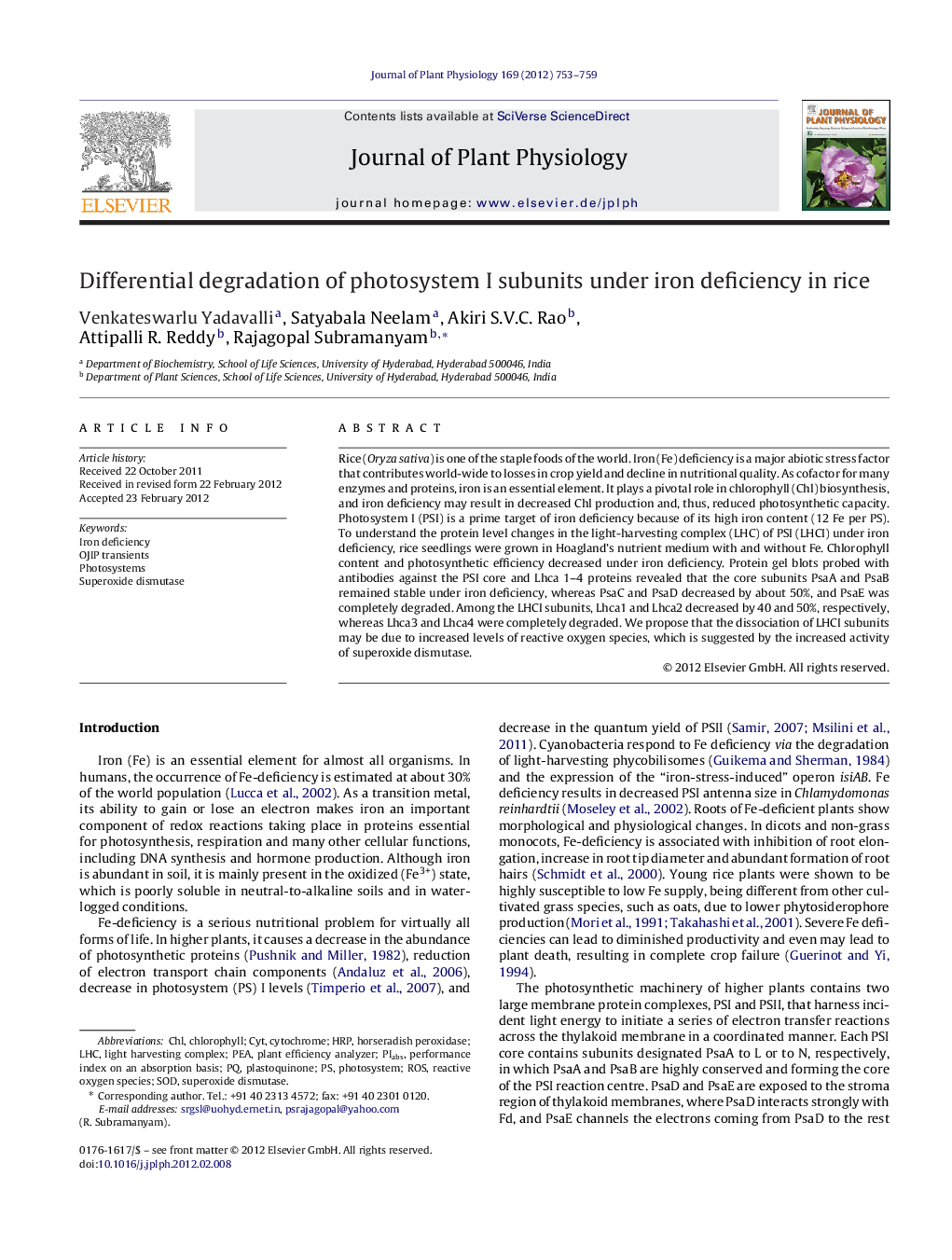| Article ID | Journal | Published Year | Pages | File Type |
|---|---|---|---|---|
| 2057315 | Journal of Plant Physiology | 2012 | 7 Pages |
Rice (Oryza sativa) is one of the staple foods of the world. Iron (Fe) deficiency is a major abiotic stress factor that contributes world-wide to losses in crop yield and decline in nutritional quality. As cofactor for many enzymes and proteins, iron is an essential element. It plays a pivotal role in chlorophyll (Chl) biosynthesis, and iron deficiency may result in decreased Chl production and, thus, reduced photosynthetic capacity. Photosystem I (PSI) is a prime target of iron deficiency because of its high iron content (12 Fe per PS). To understand the protein level changes in the light-harvesting complex (LHC) of PSI (LHCI) under iron deficiency, rice seedlings were grown in Hoagland's nutrient medium with and without Fe. Chlorophyll content and photosynthetic efficiency decreased under iron deficiency. Protein gel blots probed with antibodies against the PSI core and Lhca 1–4 proteins revealed that the core subunits PsaA and PsaB remained stable under iron deficiency, whereas PsaC and PsaD decreased by about 50%, and PsaE was completely degraded. Among the LHCI subunits, Lhca1 and Lhca2 decreased by 40 and 50%, respectively, whereas Lhca3 and Lhca4 were completely degraded. We propose that the dissociation of LHCI subunits may be due to increased levels of reactive oxygen species, which is suggested by the increased activity of superoxide dismutase.
